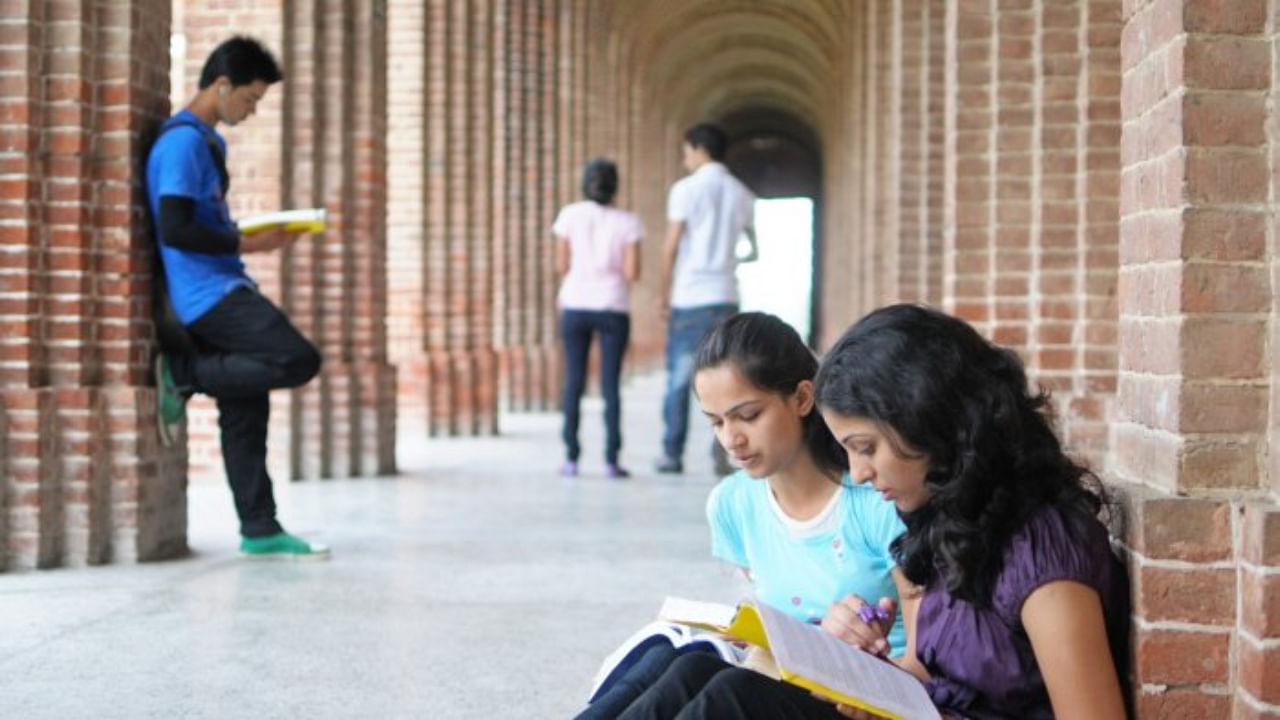
Representative image of students studying in a college.
Credit: Getty Photo
India boasts 1,301 universities, with 747 government institutions (57.42 per cent) and 554 private institutions (42.58 per cent). This represents a 12.34 per cent increase from 2021–22, with private institutions growing by 16.96 per cent and government institutions by 9.05 per cent. Enrolment in higher education has also increased, reaching nearly 4.33 crore in 2021-22, up from 4.14 crore in 2020-21, an increase of 18.87 lakh (4.6 per cent). Compared to 2014-15 at 3.42 crore, enrolment has increased by 26.5 per cent. While this expansionary phase of Indian higher education is notable, as a product of the system and a scholar of the economics of higher education in India, I present five critical questions about the state of expansion in higher education. These questions are opportunities for improvement, not critiques.
The Privatisation Question: Privatisation is often considered necessary for qualitative expansion, especially given that approximately 2.9 per cent of gross domestic product (2023–24) is spent on education—significantly less than the recommended 6 per cent—with even less allocated to research and development in the National Education Policy. However, this expansion may not necessarily bridge the gap in access to quality higher education across different socio-economic groups. The exorbitant fees charged by private institutions create barriers for financially underprivileged students, effectively shutting them out of the system. Even more concerning is the fact that low-quality education often leads to low-paying jobs or unemployment, trapping individuals in a cycle of poverty. Consequently, rather than reducing inequality—one of the primary goals of educational expansion—privatisation
may exacerbate income and social inequality.
The Question of Unequal Tracks: In higher education, “track” refers to the various educational pathways, such as engineering, medicine, and humanities, that individuals pursue. However, questions remain about the demand and supply dynamics of these tracks. On the demand side, certain tracks are more expensive to pursue than others. On the supply side, not all tracks produce graduates in high demand in the job market. Beyond the horizontal inequality among different tracks, vertical inequality within tracks is concerning. For instance, an engineering graduate from an IIT or a management graduate from an IIM is often favoured over graduates from lower-ranked institutions. This disparity raises questions about the true potential
of higher educational expansion to create equal opportunities for all.
The Dismal Attainment across Groups: Modern educational disparities include and extend beyond traditional categories such as caste, region, religion, and gender, creating new concerns. These groups represent structural and peripheral strata of students often deprived of quality education. Education is meant to bridge such divides, but these modern groups only deepen them. The divide stems from disparities in curriculum, access to market-ready skills, infrastructure for emerging technologies, and the networks and peer groups that signal student quality. The solution to this issue remains unclear, but its consequences are evident in the stark differences in salary profiles and other employment outcomes.
Name Matters Much: An institution’s name significantly impacts higher education. While it’s expected that not all institutions will be equal, the troubling reality is that a small percentage of students benefit from attending the so-called “prestigious” institutions. This exclusivity is concerning because the weight of the name of an institution limits opportunities for upward mobility, particularly for students from lower socio-economic backgrounds. A clear example of this is the hiring practices of Indian private universities, where assistant professor positions often require foreign degrees, and even lower-tier institutions prioritise candidates with IIT or IIM credentials to enhance their faculty profiles.
The Question of What’s Next? This isn’t about policy suggestions but rather the transition from higher education. In today’s world of information and artificial intelligence, timing is crucial. The awareness of securing the best possible job interview remains elusive for many. The continued pursuit of civil services and other competitive exams reflects a broader aversion among the youth to face the uncertainty of the job market, thus avoiding the “what’s next” question. With institutions’ rapid expansion and graduates’ exponential growth, the employability debate isn’t new. However, the lack of a clear path to a fulfilling life is a fresh concern for recent graduates. Amidst the abundance of information and growing distrust in a system increasingly dominated by private interests, the absence of effective guidance has become a significant challenge.
In Consuming Higher Education: Why Learning Can’t Be Bought, Joanna Williams argues that in modern higher education, “by framing students as consumers, universities are encouraged to prioritise satisfaction over intellectual challenge, to the detriment of true educational growth.” While issues like privatisation and unequal tracks are undeniably relevant, the ultimate goal should be to find an equilibrium that fosters a more equitable societal good, even if this remains an idealistic or utopian vision.
(The writer is a PhD scholar at the Institute for Social and Economic Change, Bengaluru)